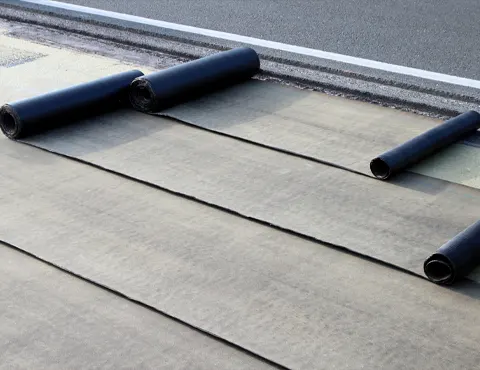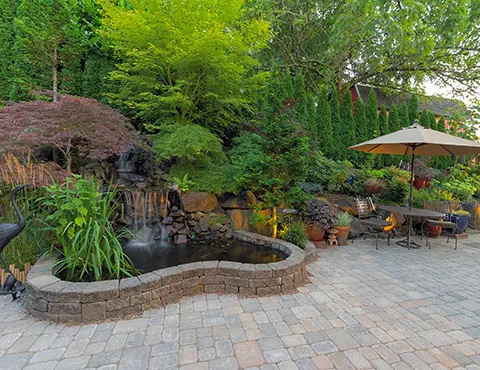This website uses cookies so that we can provide you with the best user experience possible. Cookie information is stored in your browser and performs functions such as recognising you when you return to our website and helping our team to understand which sections of the website you find most interesting and useful.

RE-ROOFING SERVICES
At Hardscape, we are fully insured and experienced in installing new roofs and re-roofing projects. Over the years, we’ve completed numerous roofing installations and offer a variety of styles and colors to suit your preferences. Whether your roof requires minor tile repairs or is in such poor condition that a full replacement is necessary, we’ve got you covered.
The Process of Installing a New Roof
Installing a new roof follows a systematic approach, which can vary slightly depending on the specific job. Here’s an overview of the general process:
- Assessment and Material Selection
We begin with a thorough assessment of your existing roof. This helps us decide which materials can be reused and what new materials are required. - Ordering and Preparation
Once materials are selected, we order and have them delivered to the site. A skip is arranged for proper disposal of waste materials. Scaffolding may also be set up if needed, though it’s not always essential. - Stripping the Old Roof
The removal process starts with carefully stripping the existing roof materials. We begin with the ridge tiles at the top, followed by slates or tiles, exposing the roof’s timber structure and tile laths. The roof is essentially reduced to its “skeleton” at this stage. Damaged or rotten joists are replaced to ensure a strong foundation. - Laying Breathable Felt
A layer of breathable felt is installed, starting from the bottom of the roof and working upwards. This layer acts as a secondary shield, allowing moisture to drain into the gutter while keeping the roof watertight—even before tiles are installed. - Fixing Tile Battens
Tile battens are secured with galvanized nails, spaced appropriately based on the size and type of tile. These battens create the rows that the tiles or slates will rest on, ensuring proper overlap for optimal durability. - Fitting Tiles or Slates
Roof tiles or slates are then installed. Concrete tiles typically only require fixing at specific intervals, while slates without hanging nibs must be individually nailed into place. Tiles near roof features like valleys or windows are cut to size for a precise fit. - Leadwork Installation
First-stage leadwork, such as soakers or secret gutters, is fitted and covered with tiles. Remaining leadwork, like flashings, is installed once the tiles are in place. - Final Touches
Finally, ridge tiles are dry-fixed to seal the roof completely, making it 100% watertight and ready to withstand the elements.
With Hardscape, you can trust that your new roof will be installed to the highest standards, ensuring long-lasting durability and excellent craftsmanship. Contact us today to discuss your roofing needs!
OUR CUSTOMERS




OUR SERVICES

Flat Roofing
We offer a range of flat roofing solutions, rubber roofing, traditional felt roofing or a more modern Fibre glass product that will last for many years.

Re Roofing
We offer a range of different styles and colours that can be used on your new roof. It may be the case of repairing/replacing tiles on your roof or if its in a bad state of disrepair it may need a complete new roof.

Roof Repairs
Is your roofing in a state of disrepair or have you noticed damp in the home? We have the skills to deal with all roof repairs.We will remove all of the damaged tiles or roofs and fully replace and install these with the style of your choice.

Verges, Ridges & Valleys
We can install and replace new dry roofing systems. If necessary we can replace your mortar with a maintenance free dry fix system. We will remove the old dry ridge and/or dry verge and make sure that all damaged parts of the roof are fixed and safe.

Fasicas, Soffits & Cladding
We provide a comprehensive range of fascias, soffits, cladding and guttering. Whether it’s a first time installation or a replacement of an old system, we can provide you with a roofing solution to be proud of for many years to come.

Block Paving
Both appealing aesthetics and durable performance, block paving is unrivalled in its versatility to provide the optimum surfacing solution across the broadest spectrum of commercial construction applications.

Tarmac Driveways
An attractive driveway may add value to your home or provide a focal point for passers-by. Whether on a driveway, footpath crossing, access road or on a car park we can provide the full package from excavation to smooth rolled finish.

Garden Landscaping
Whether your garden is a haven of plants and wildlife that you can escape to, a place for BBQs and entertaining or a practical outdoor space for work or play, we will turn your vision into reality.
GET IN TOUCH
If you need a fast FREE quote, give us a call or send us a message
tel: 01543 887989
ADDRESS
8b Cross Street, Bridgtown, Cannock, Staffordshire, WS11 0BZ
PHONE NUMBER
tel: 01543 887989
mobile: 07477 584 352
info@
hardscapedriveways.co.uk
OPENING HOURS
Mon-Fri: 9am-5pm
Sat: 9am-3pm
Sun: Closed











